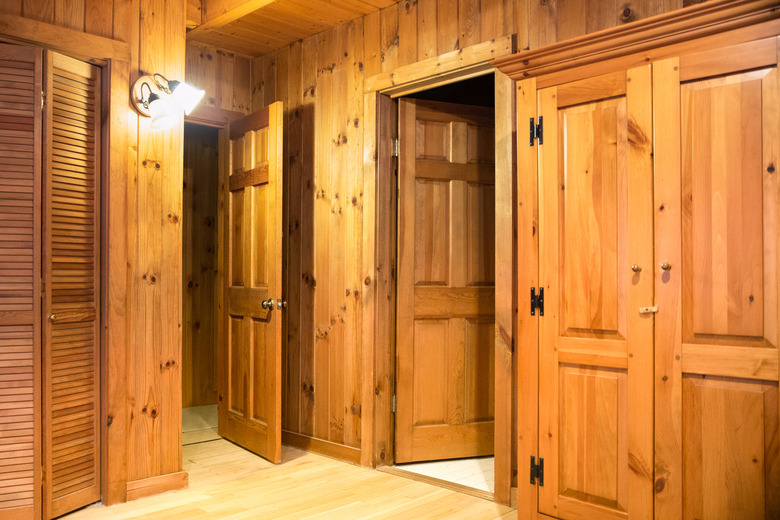5 Uses For Pine Wood
We may receive a commission on purchases made from links.
When it comes to the various types of wood used in and around the home, pine is a major contender that's useful for everything from floors to wood paneling, cabinets, some furniture, and even decks. As a softwood, it doesn't resist damage as well as hardwoods, such as oak, but it's often less expensive since pine trees grow relatively fast.
1. Pine Wood Flooring
1. Pine Wood Flooring
Though it shows dents and dings a bit more easily than floors made of hardwood, pine is still an attractive and common option for wood floors. Unfinished pine boards have hints of yellows, reds, and honey browns in them as well as darker knots that give the floorboards character. Finishing the pine with a sealer protects the wood. Over time, pine darkens a bit for added beauty, and its natural color variations really show through.
2. Knotty Pine Paneling
2. Knotty Pine Paneling
Offering a completely rustic look suitable for that vacation cabin getaway, knotty pine panels can be used on virtually any vertical or angled surface or even the ceiling. Pine paneling retailers offer the panels or planks in various lengths and widths and with tongue-and-groove sides that lock together for that classic pine paneled look. Those same retailers often sell matching knotty pine molding.
The look of knotty pine is unmistakable, even if you're not familiar with the appearance of various wood grains, as knots are the dominant feature in these panels. Once installed, the wood is usually sealed with a protective clear coat rather than painted over, as the knotty wood grain look is sought after by those who appreciate the appearance.
3. Pine Cabinets Galore
3. Pine Cabinets Galore
Pine is sometimes used for solid wood cabinets rather than the hardwoods usually used for cabinetmaking. Finished with a clear coat, pine cabinets pair well with rustic or country decor and are suitable in workshops, cabins, or even a country home.
As with pine flooring, pine cabinets dent and scratch quite easily, so a coat of polyurethane is a good choice for preventing moisture absorption and for making the cabinets a little more durable than the bare wood is on its own. Since heat also affects pine, it might not be the ideal choice for cabinets directly above a stove unless the entire cabinet, including the bottom, is stained and sealed.
4. Pine for Furniture
4. Pine for Furniture
Pine is sometimes used to make furniture, as it's abundant and relatively easy to work with even for novice furniture makers. It's lighter than a comparable piece of furniture made of a hardwood such as oak, so it's an excellent choice for small bookcases, tables, and other furnishings that might be moved from time to time.
If you enjoy furniture with a distressed look and like taking on the project yourself, a pine piece such as a small side table is an excellent choice. Simply paint it in a desired base color if you want it painted, distress it with hammers and whacks from random metal tools and hardware, and then rub on a coat of glaze in another color if you like. Add your favorite clear sealer.
Pine is best used for indoor furniture since the wood is easily damaged by moisture, heat, or even ultraviolet rays from the sun. If you're using pine furniture outdoors, it is best in a protected area, such as a screened-in porch.
5. Pressure-Treated Pine Decks
5. Pressure-Treated Pine Decks
Pressure-treated lumber, typically southern yellow pine, is an incredibly popular choice for deck material, possibly because it's less expensive than many other woods and it lasts a long time provided it is properly maintained. It's available at just about any lumber yard or home-improvement store with a lumber section, so it's easy to come by even for a DIY deck builder.
Nevertheless, it's a good idea to read up on the pressure-treated lumber options available in your area, as some chemicals used to treat the wood may exacerbate health issues. A little shopping around in your area will likely turn up some treated woods that use less-harmful chemicals. Some companies also sell the pine already coated with a water repellent, which helps keep your deck in better shape longer.
